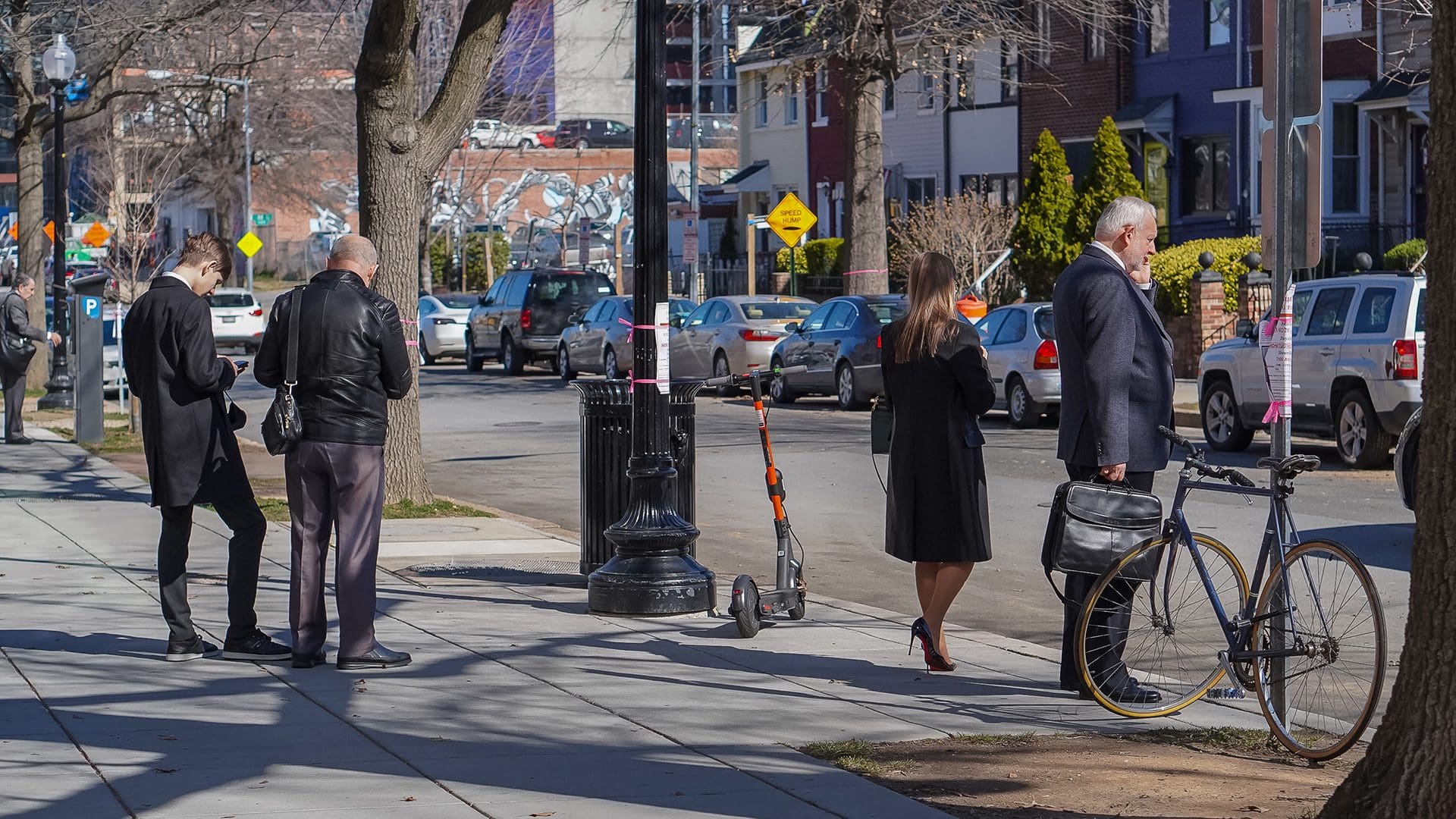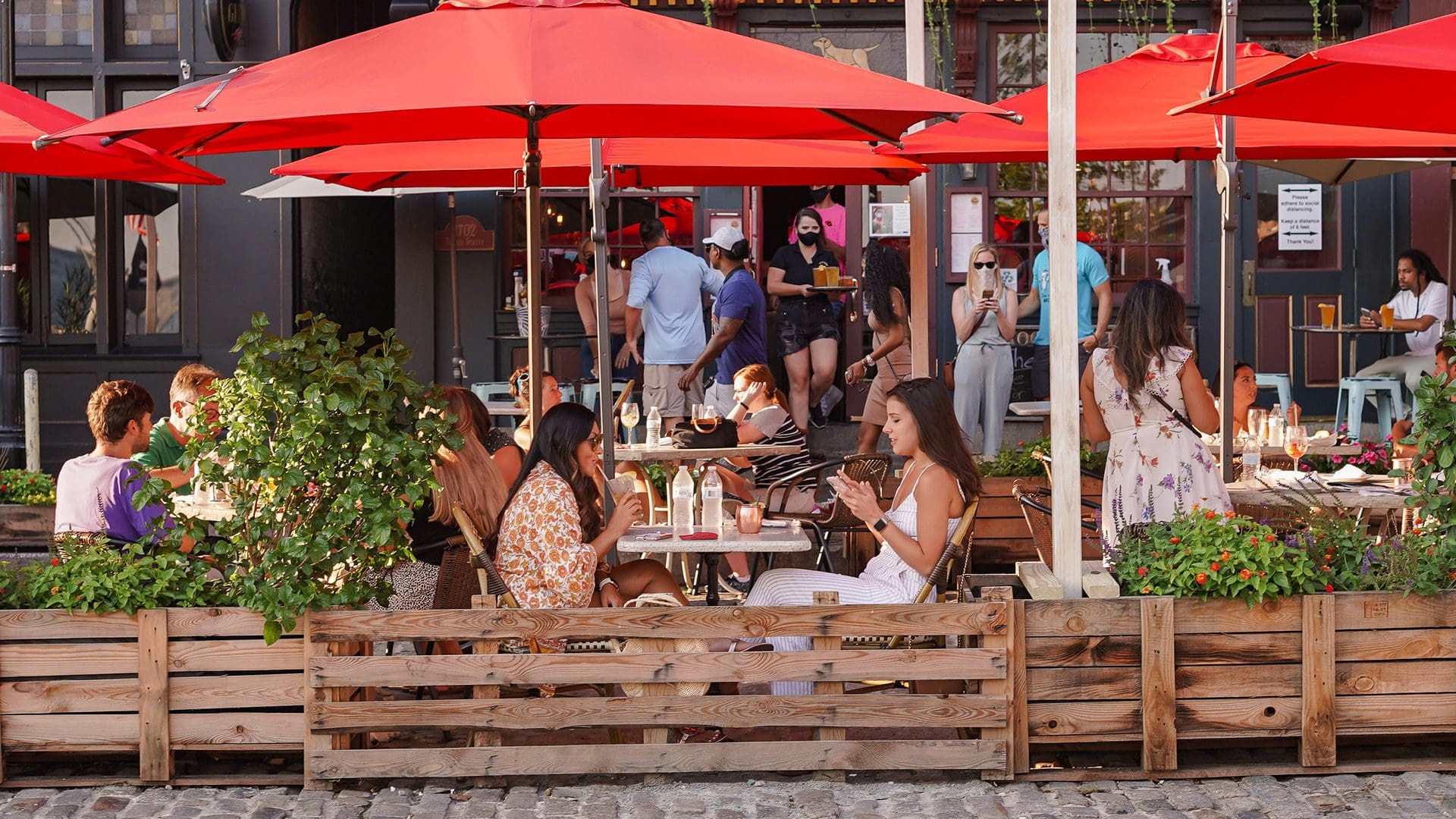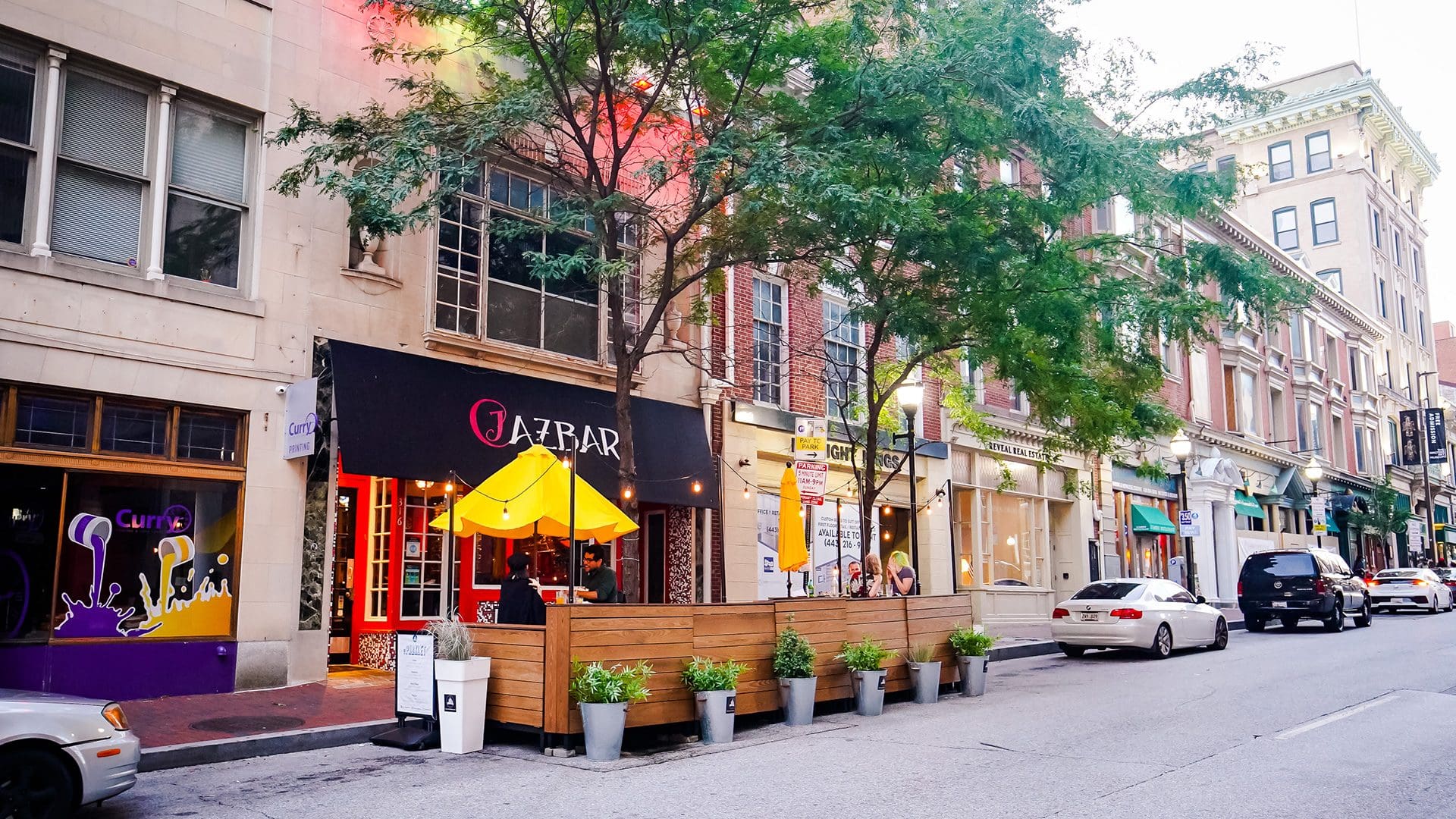November 12, 2020
Will the pandemic permanently change the way we use the curb?
In almost every urban area and town in the world, the curb is a scarce resource with many competing needs.
Everybody wants a piece of the curb: ride-hail services, buses, trucks, taxis, private shuttles, personal autos, pedestrians, bicyclists, micro-mobility sharing services, delivery services, restaurants, shops, offices, and residences.
Many are looking for a cheap and convenient place to store or charge their vehicle, bike, or scooter. Others want to pick up and drop-off passengers or freight as close to the front door of a business or residence as possible. Public and private transit services need a protected place on the curb for passengers to wait until the bus arrives and curb access to serve people with disabilities. The public works department wants the curb for street lighting, utility conduits, signs, traffic signal controllers, stormwater drainage, and temporary snow storage. Emergency services (police, fire, ambulance) need a place to safely enforce the vehicle code and quickly access residences and businesses.
So, who wins? Or rather – who should get a piece of the curb? It’s a question our profession is constantly revisiting as new or updated technologies enter the scene and community needs change. And COVID-19 has some interesting implications that may have long-term impacts on these decisions.

Passengers waiting for ride-hailing services at the curbside (pre-COVID-19).
A Taxonomy of Curb Space Uses
Historically, curbside management focused on metered vehicle parking, commercial loading, and residential parking permit programs. Today’s curbside management programs are significantly broader. Cities (e.g., Seattle, New York, San Francisco, Washington, DC) and several states are thinking more holistically about the area around the curb on its street and sidewalk sides. The City of Seattle has called this area the flex zone.
The chart below shows a potential expanded taxonomy of the Institute of Transportation Engineers (ITE) Curbside Management Practitioner’s Guide into broader definitions of curb space that encompass both permanent and transitory uses.

As this chart illustrates, while the curbside’s traditional demands remain, many new infrastructure and operational needs have converged in the curb space, such as bikeshare stations, scooter corrals, and mobility hubs.
Curb to the Rescue: Curbside Management During COVID-19
In the spring of 2020, when cities went into lockdown due to the COVID-19 pandemic, social distancing guidelines went into effect, and restaurants and businesses could not let customers inside. Many traditional uses of the curb were put to the side to make space for tactical urbanism projects.
At the time of this writing, there are now many examples of creative repurposing of space for socially distanced recreation, shopping, and dining – including closing lanes or streets to cars and temporarily waiving permitting fees and applications to allow restaurants and retail businesses to expand their business footprint onto the public right-of-way or into privately owned parking facilities. Street patios, or “streateries,” have taken over both curbside space and travel lanes and remain a safe way for restaurants to stay open.

Baltimore residents enjoy the "streateries" in the Fells Point neighborhood in summer 2020.
We reported on a few of these tactical urbanism projects over the summer and have appreciated the chance to help implement quick-build COVID-19 relief projects. One example is the MassDOT Shared Streets and Spaces Grant Program, where we’ve worked with nine municipalities to deliver plan view concepts and opinion of probable cost documentation to apply for implementation funding for six open space installations, two bus lanes, two safe routes to school installations, three bike network installations, two traffic calming efforts, and 13 streateries.
As temperatures drop, restaurants are “winterizing” their outdoor dining structures – adding roofs, tents, and heaters to keep outdoor dining safe and comfortable in colder months.
All of these examples point to something important: what it is we value most. The best and highest use of curbside space is, and should always be, supporting communities.
When faced with a choice during COVID-19, cities repurposed the curb to put people first. They chose to create community space over storing vehicles.
The adaptation of space has been important from a revenue perspective, too, as it has helped businesses stay open during COVID-19. Staying open has secondary and tertiary benefits, such as keeping staff employed and paying rent. Some benefits are hard to quantify, like community wellness.
The benefits of repurposing curbside space for safe, socially distanced active transportation and outdoor dining during COVID-19 have been clear. It’s important to note, however, that while street patios/streateries have been successful in supporting businesses and creating a community-centric sense of place on many streets, there has been little competition for these sidewalks and curbs in the height of the pandemic. Moving forward, there is a host of competing needs to consider.
Curbside Management in a Post-COVID World
All viable uses of curbside space – from emergency vehicle parking to delivery zones to scooter corrals – support their communities in some way. When we can safely eat and shop inside again at the same capacity we did before COVID-19, all of the traditional competing curbside needs will return.
Long term, what does a community-first approach to curbside management look like? Will the streateries we’re enjoying today be made permanent? Will cities go back to the way they used the curb before? Will the tax revenue that goes to a city from outdoor dining and creating accessible community spaces be greater than the revenue that city would get from storing vehicles in that space?
Will the tax revenue that goes to a city from outdoor dining and creating accessible community spaces be greater than the revenue that the city would get from storing vehicles in that space?
Cities have a unique opportunity to take what we’re learning in 2020, quantify the value of outdoor dining and community spaces, and build curbside management programs that will serve their communities’ needs for years to come. The answer may be different for every city, but it’s worth exploring, and here’s how.

Five Approaches for Long-Term Curb Management Planning in Light of COVID-19
We see the following approaches as essential to carrying out a successful curb management plan.
1. Collect Data Before the Pandemic is Over
Traditionally, curbside data collection is a combination of occupancy and duration. If it’s a PU/DO space, how many pick-ups and drop-offs are taking place, and how long does each one take? If it’s a restaurant table, how many people are at the table and for how long?
Today, cities are presented with a unique opportunity to collect data they won’t be able to obtain later. In fact, when restaurants are only using curbside space, the causality of their revenue is isolated. In other words, it’s possible to tell how much revenue for a business is generated purely at the curbside.
By collecting data now, cities will have reliable data to refer back to later when determining the ROI of different curb uses.
2. Define ROI of Curb Uses By Location and Time
Each right-of-way agency, land-use agency, and adjacent land/business owner needs to understand the benefits of different curb uses by the time of day, day of the week, and season to make informed decisions.
Curb use should be optimized and prioritized through defining and balancing:
- The curbside demand by mode
- The economic return on investment (monetization of the curb) based on data inside and outside the right-of-way, including the secondary and tertiary economic benefits of placemaking and humanizing spaces
- Public health considerations
- Equity considerations
- Proximity to destinations, such as mobility hubs and commercial corridors.
Through the Innovation Kitchen, Kittelson’s internal program designed to foster and develop advancements in the transportation profession, we’ve been working on a curbside value model to communicate the value (economic, social, equity, safety) associated with different allocations of curbside space. We are working with jurisdictions in the DC area to identify the curbside space allocation demand by mode, assess the impacts and value associated with varying curbside uses based on changes in activity, volume, monetary value, and land use.
3. Collaborate Across Jurisdictions
We recognize that curbside management is highly complex. For example, some agencies control the right-of-way and adjacent land uses. Others control only the right-of-way, or the adjacent land uses, and others (e.g., regional governments and transit agencies) control neither the right-of-way or adjacent land use. When the right-of-way is shared by multiple jurisdictions, meaningful collaboration is needed among peer agencies, regional governments, transit agencies, and/or the state department of transportation to carry out an effective curb management plan.
4. Allow for Dynamic Curb Management to Address Competing Uses and Objectives
Even within the same jurisdiction, dynamic curbside management needs vary widely. Each agency (right-of-way and land-use agency), adjacent property/business owner, and neighborhood has its own objectives for curbside management.
A curbside management program should be tailored to specific subareas and even blocks with different dynamic curbside management needs. An example of this is the parkDC: PennQuarter/Chinatown Parking Pricing Pilot, a demand-based pricing system that provides real-time parking information using spatial and temporal sampling, including partial sensor coverage, payment data, fixed and portable cameras, computer vision algorithms, and other data inputs.
5. Prepare for New Curbside Demands
With the proliferation of ride-hailing, new technologies, and varying curbside demands, soon, there will be opportunities to incorporate vehicle to curb communication to enhance curb space uses. Agencies should look to develop robust communication systems that allow modes (e.g., transportation network companies (TNCs), vehicles, delivery vehicles, and ultimately automated vehicles) to equitably use the curbside.
What’s Your Curb Management Plan in Light of COVID-19?
We’re living through a unique opportunity to use what we’ve learned this year about how the curb can play a major role in creating thriving community spaces. Cities should be quantifying and evaluating options and working out a plan for how the curb space can support communities both now and in the years to come.
To continue this conversation, free to reach out to any one of us:
- Marc Butorac, Senior Principal Engineer, Portland
- Alek Pochowski, Senior Engineer/Planner, Washington, D.C.
- Jamie Henson, Associate Planner, Washington, D.C.
